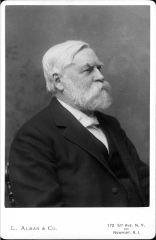Lawrence Hall was also completed in 1926. The gift of Colonel Austen Colgate, a Trustee since 1898, it was named in honor of his friend and former pastor, Dr. William M. Lawrence, President of the University Trustees, (1905-12), and since 1912, Lecturer in Christian Ethics and Homiletics in the Seminary. The architect was Walter B. Chambers, New York, who designed the three remaining buildings of the Cutten administration. Its classrooms were assigned to the Departments of Classics, German, Mathematics, Romance Languages, History and Politics, and English and thus congestion in other classroom buildings was relieved.
The second dormitory of the Cutten period was Stillman Hall which Edward H. Harkness, the benefactor of Harvard and Yale, gave in memory of his father-in-law, Thomas Edgar Stillman, Class of 1859, a prominent New York lawyer. It was opened in 1927 for the exclusive use of freshmen.






